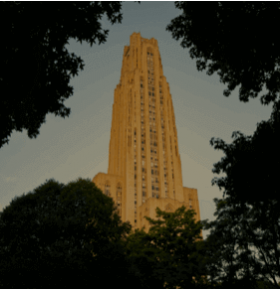
Subscribe to Pittwire Today
Get the most interesting and important stories from the University of Pittsburgh.Sandra Murray has two passions in life: cell biology and diversity in scientific research.
“If you have more people coming from different backgrounds, they ask different questions and look for different solutions,” said the professor in the School of Medicine’s Department of Cell Biology. “You use a strength in science that way by having different thought processes.”
The American Society for Cell Biology recently awarded Murray a Lifetime Fellow Recognition for distinguished contributions to the advancement of cell biology. She is the first African American woman to be named a society fellow.
“There will be more to follow,” she said with a smile. “The door has been opened.”
The society, founded in 1960, is a worldwide community of biologists studying the cell, the fundamental unit of life. Its website describes its members as “dedicated to moving scientific discovery forward, advocating and fighting for sound research policies, improving education and teaching innovations, promoting professional career development and increasing inclusiveness in the scientific workforce at all levels.”
Pushing for more diversity in the research community has been a goal of Murray’s for a long time.
Born and raised in Chicago, Murray took an early interest in science.
“I was in science fairs every year,” she said. “Some projects I did included turning hard water soft and examining rotifers, microscopic organisms. That was my first time using a microscope.”
However, Murray found it difficult to gain support from her high school advisers for her interest in scientific research, with some suggesting she take a different career path.
“I remember there was no one who I could go to who really knew the path I should take,” she said. “They said, ‘You’re not going to be a research scientist. You’re going into vocational training.’”
Ignoring her detractors, Murray persevered and studied biology, biochemistry and psychology at the University of Illinois at Chicago (then called University of Illinois at Chicago Circle), Texas Southern University, the University of Iowa and the University of California, Riverside.
In 1982, she came to Pitt as an assistant professor and has made it her home since.
Murray’s primary research is in cell communication and manipulation of cell growth, with many published works to her credit. She recently submitted a grant proposal to the National Science Foundation to support her research into molecules that form communication channels between cells.
“Thanks to the University, I have been able to maintain an active funded research program for more than 35 years,” Murray said. “I have been able to make discoveries, train medical students, graduate and undergraduate students, postdocs and junior research faculty in the art of cell biological research here at the University of Pittsburgh.”
Beyond borders
And her diversity and research efforts are not limited to the United States.
In 2002, Murray organized a team of female cell biologists and medical students to teach anatomy to students in the Ethiopia Armed Forces Medical Research Institute.
Cooperating with Howard University scientists, she helped to develop the first physician assistant program for Ethiopian medics who participated in an 18-year civil war that ended in 1991, teaching them anatomical skills essential for situations such as closing an open wound. The first class of 58 medics each graduated with a physician assistant degree.
“I had flown there originally thinking I was going to do research there,” Murray said. “But when I got there, they had already decided they wanted to do this program. They wanted to use these military soldiers, but they had not attended a four-year college; they had been fighting this war.
“They also didn’t equate the name Sandra with a woman, so they were expecting a white male,” she added.
She brought modern relevant techniques in cellular, developmental and molecular biology to the University of Siena in Italy under the Fogarty program.
“As a role model and through her eminence as a scientist, she continues to motivate and inspire scientists of all ethnic groups to pursue careers in STEM,” said 30-year acquaintance Winston Anderson, Howard Hughes Medical Institute Professor at Howard University. “Her reach has been global. She is energetic and enthusiastic and this enthusiasm is contagious to students and colleagues alike."
While Murray has seen improvements in research diversity through programs advocating for overall increases in involvement by people from underrepresented groups, she said much more needs to be done.
“If you asked me now how much diversity universities have for research, the numbers don’t look as they could be,” she said.
Her advice to students seeking careers in research includes being persistent, managing your time well and knowing that the word “no” is just the first step in getting to “yes” at a negotiating table. “Follow your dreams and ignore unhelpful things,” she said.
— Amerigo Allegretto


